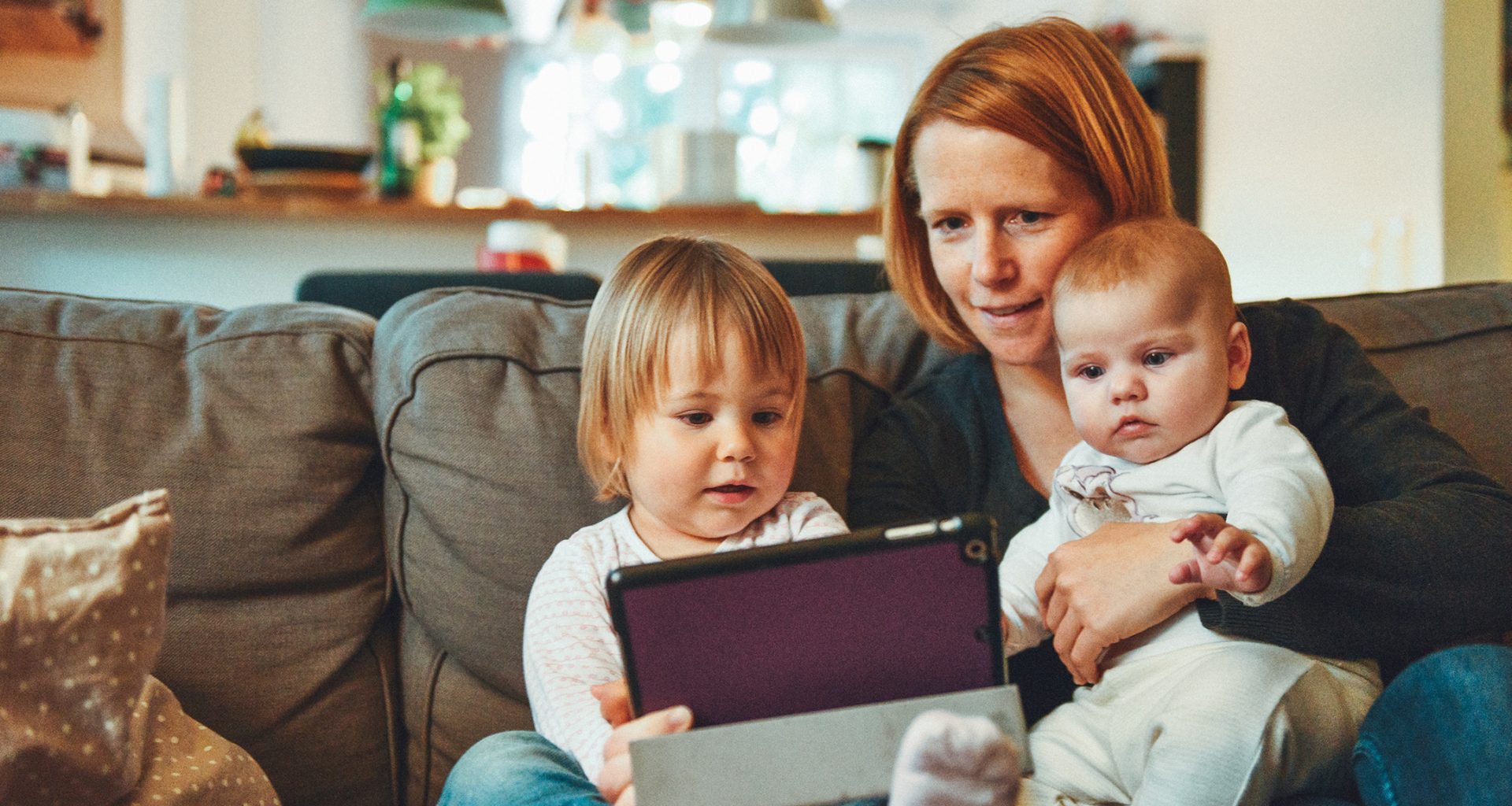For parents of young kids, there’s plenty of great stuff that goes along with it — soothing a fussy toddler on a plane with a favorite movie, being able to get in touch quickly with plan changes and a face-saving path to answering questions like “Why is the sky blue?”
But there’s bad stuff too. How bad (or not) we don’t actually know. A 2017 study by Oxford University found that restricting screen time was not associated with increased well being. However, preliminary findings from an ambitious study from the National Institutes of Health, which is tracking more than 11,000 kids over a decade, showed that children who have more than two hours of screen time a day got lower scores on tests focused on thinking and language skills and those who spend 7 or more hours a day on screens actually alter their brains, developing a premature thinning of the cortex.
What we do know is that our kids are using their screens — a lot. Children ages 8 to 10 spend an average of 6 hours per day in front of a screen and kids ages 11 to 14 an average of 9 hours, according to Centers for Disease Control and Prevention (CDC). And we have to figure out what we’re going to do about that.
“We’re not unringing the bell of tech. It’s here to stay,” says Shaila Saint, parent educator and adjunct professor at Long Beach City College whose talks on tech topics like “Social Media … OMG! Finding a Family Strategy that Works” are her most requested (www.shailasaint.com). “But the things we can change are how we use tech in our house, what our guidelines are and what we talk to our kids about.”
“It takes time and effort to turn a toddler adept at swiping across a tablet into a teenager who uses technology safely, wisely, ethically, and productively. It’s on us parents to help youth discover how to minimize the risks and maximize the benefits technology offers,” writes Diana Graber, the Dana Point-based founder of digital literacy organizations Cyberwise (www.cyberwise.org) and Cyber Civics (www.cybercivics.com) and author of “Raising Humans in a Digital World: Helping Kids Build a Healthy Relationship with Technology.”

Graber advocates “digital on-ramps” — ways that parents can slowly and naturally introduce their children to technology. “A focus on the positive uses of tech — using it to connect with loved ones, to learn new things, to be creative — breeds positive online habits that will, hopefully, last a lifetime,” she writes.
A child under 2, for example, can sit on a parent’s lap for a video call with loved ones. Children 3 to 6 can sit with a parent to send texts, emails or photos to friends and relatives. Kids age 7-9 could spend time with a parent playing child-friendly games together, keeping a digital journal on a family trip or using something creative, like a drawing app, together.
“These digital on-ramps serve another purpose. By becoming involved in your children’s online lives from day one, you’ve planted yourself as a ‘guide on the side,’ who will be there if and when things get confusing or uncomfortable online,” writes Graber.
Parents can also model good behavior, not only in — yikes! — curbing their own use of screens, but explaining how they’re using them, even to very young children. Graber offers examples like “I’m not sure what to make for dinner tonight, so let’s look for a yummy recipe together” or “We are going to the zoo tomorrow, so I’m going to look at the map to find out how to get there. Do you want to look with me?”
All of this is prep for getting to the Big Question: When is the right time your child’s first smartphone? Well, there’s no particular “right” age–it varies, depending how prepared your child is (questions to consider are below), not to mention how strong you can be against the forces of a kid asking for a phone 3 million times. Sometimes the “right” time has to do with simple practicality, like the need to coordinate after school pick-ups.
As kids get older, their online activities get less and less traceable. The more that we can empower our kids and have those conversations before they get to that age, they more they will hopefully make smart intentional decisions.
SHAILA SAINT
Some elementary and middle schools have banned cell phones entirely during school hours, even at lunch, forcing children to talk to each other face-to-face like people did in olden times.“I like that it gives the kids some times and places where they’re not on their phones. When I go to the school, they all seem perfectly happy. It’s just the way it is,” says Greg Keith, whose 13-year-old son goes to Lexington Junior High School in Cypress.
Other schools embrace tech, outfitting kids with tablets and inviting speakers on topics like cyber civics, that is, how to be a responsible, safe citizen online. And both approaches work. The key is having a clear, thoughtful plan.
“As kids get older, their online activities get less and less traceable. The more that we can empower our kids and have those conversations before they get to that age, they more they will hopefully make smart intentional decisions,” says Saint, who recommends frequent tech check-ins for kids and parents to talk about tech and how it’s working and not working in their lives.
And if you don’t know how to share a GIF or what the heck a streak is on Snapchat, it’s OK. Have some compassion for yourself as you navigate this new territory, she adds. “It’s always a hard time to be a parent, but especially now in this tech world. I like (educator) Marc Prensky’s terms: We parents are ‘digital immigrants’ and we’re raising ‘digital natives.’ For most of us, it’s our second or third language and we’re playing catch up.”

Is your child ready for a smartphone?
Is your child ready for the responsibility of a device? You should have a “yes” answer to the following questions, says Diana Graber, founder of digital literacy organizations Cyberwise and Cyber Civics in her new book “Raising Humans in a Digital World: Helping Kids Build a Healthy Relationship with Technology.”
- Have your children developed the social and emotional skills necessary to use their gadgets wisely? Have they learned how to show empathy, kindness, respect, and civility?
- Do your children know how to manage their online reputations? Do your children know that everything they post, and everything others post about them, contributes to an online reputation that speaks volumes about their character?
- Do your children know how to unplug?
- Have you equipped your children with strategies (and reasons) to unplug from their virtual worlds and plug into “real” life now and then?
- Do your children know how to make and maintain safe and healthy relationships? Can they keep themselves safe from cyber-bullying, predators, sexting, revenge porn, sextortion, and other online dangers? Do they know what to do if they encounter dangerous or unhealthy relationships online?
- Do your children know how to protect their privacy and personal information?
- Do your children know how to think critically about the information they find online? Are they able to evaluate media messages for their accuracy, authority, currency, and bias?
- Are your children equipped to be digital leaders? Are your kids equipped to make their digital world better and safer?

